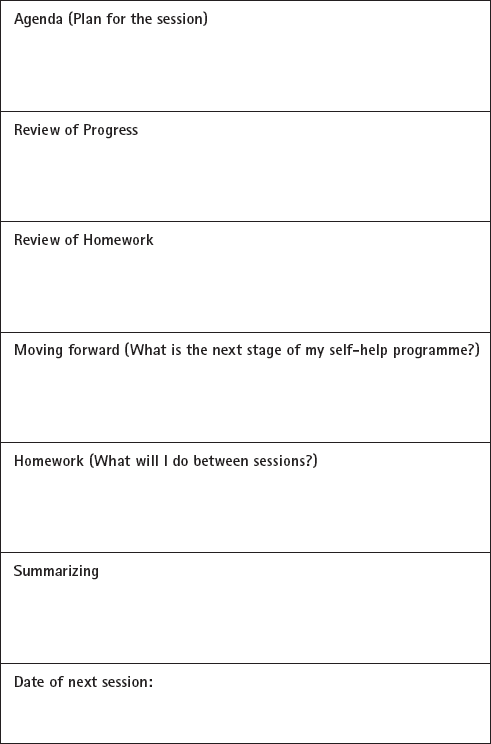

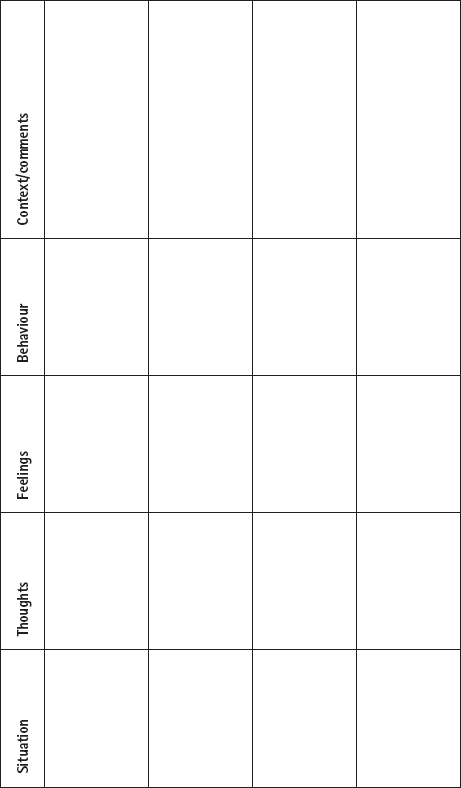
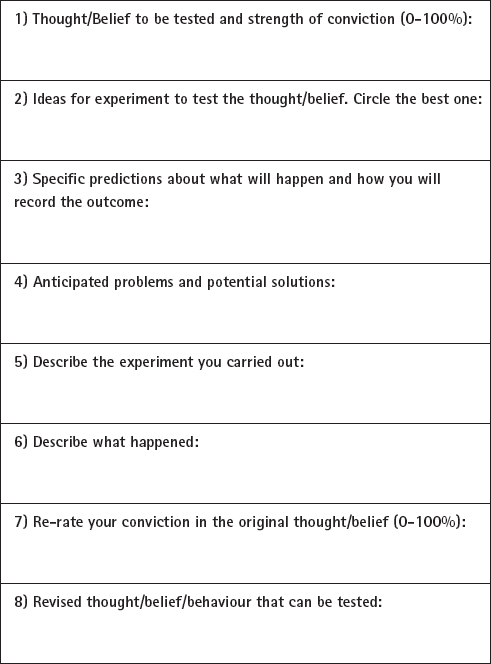
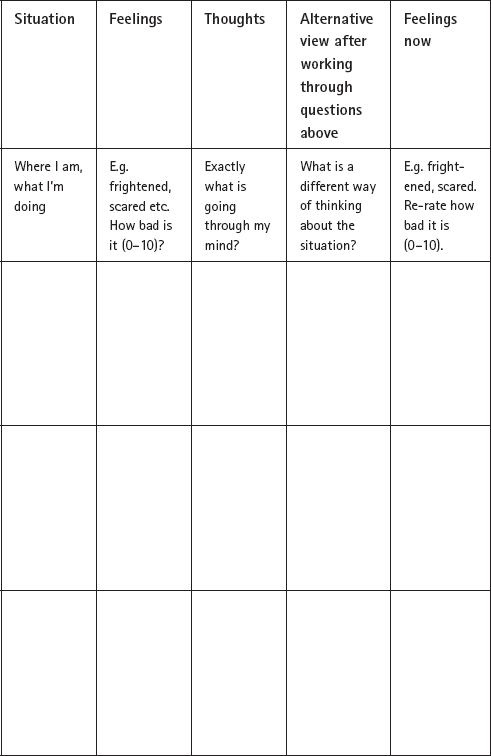
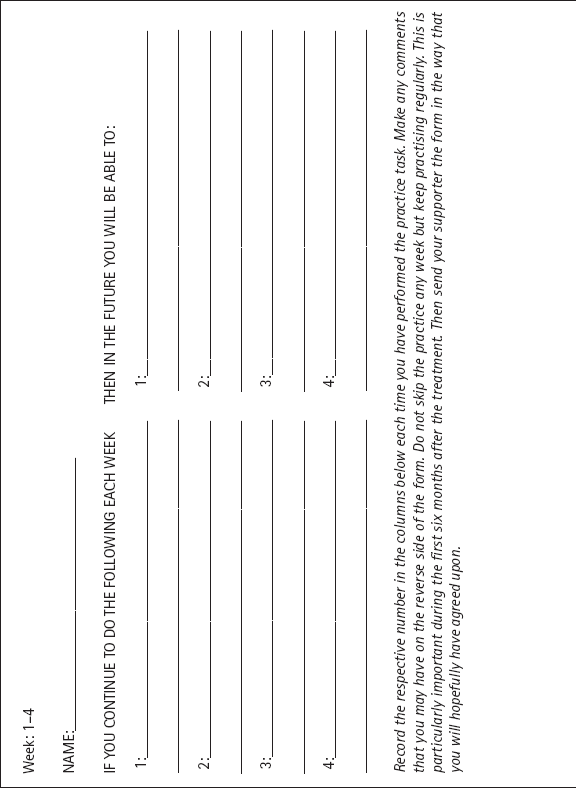
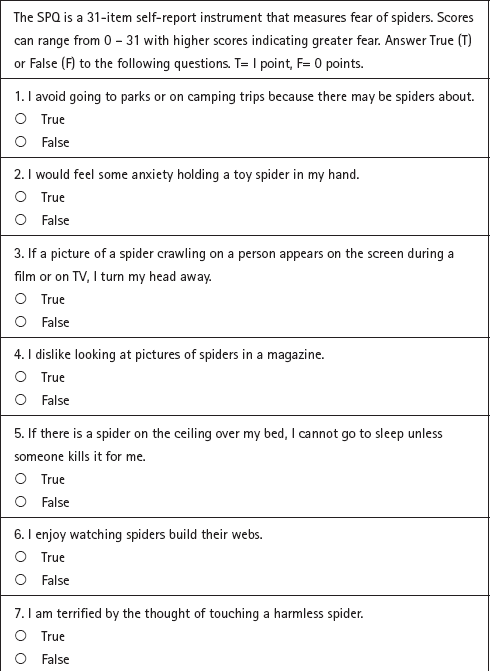
Reproduced with kind permission from R. Klorman, J. Hastings, T. Weerts, B. Melamed, & P. Lang, (1974). Psychometric description of some specific fear questionnaires. Behavior Therapy, 5, 401–9
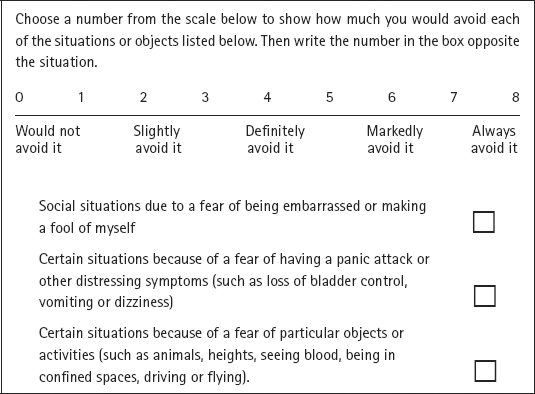
Reproduced with kind permission from Department of Health, IAPT Data Handbook, 2010, www.iapt.nhs.uk/silo/files/iapt-data-handbook-appendices-v2.pdf (p.24).
Make a list of all the possible causes of this symptom. Put the worst explanation last on your list. It would also be worth asking your supporter and other people what explanations might occur to them if they had this symptom, and adding them to your list.
The symptom you worry about most:
The possible cause you fear the most:
Various possible causes of this symptom
1.
2.
3.
4.
5.
6.
7.
8.
9.
The cause I fear the most:
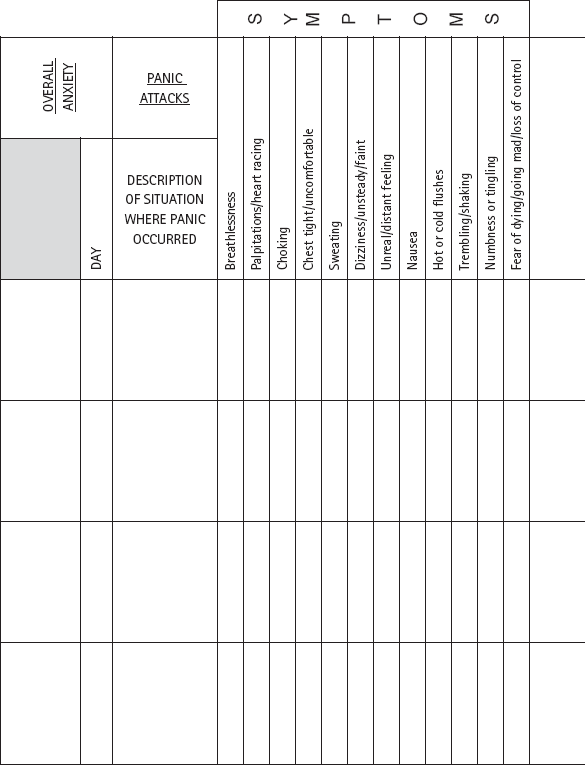
When you are at your most anxious or panicky, how often do you do the following things?
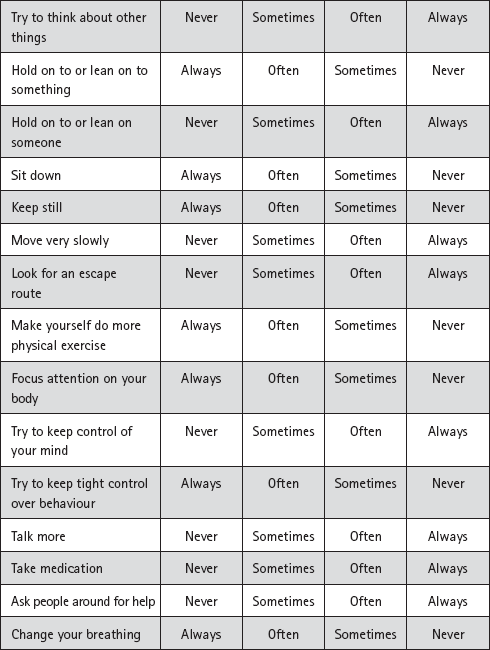
Reproduced with permission from Panic Disorder Therapist Manual for IAPT High Intensity Therapists, Clark and Salkovskis, 2009.
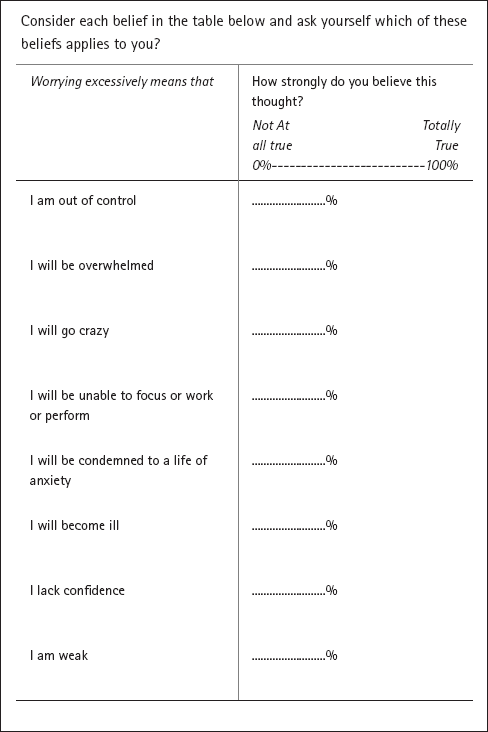
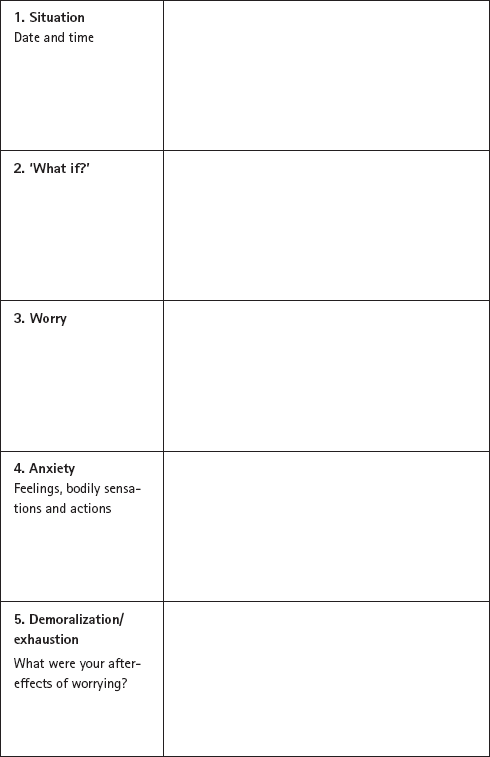
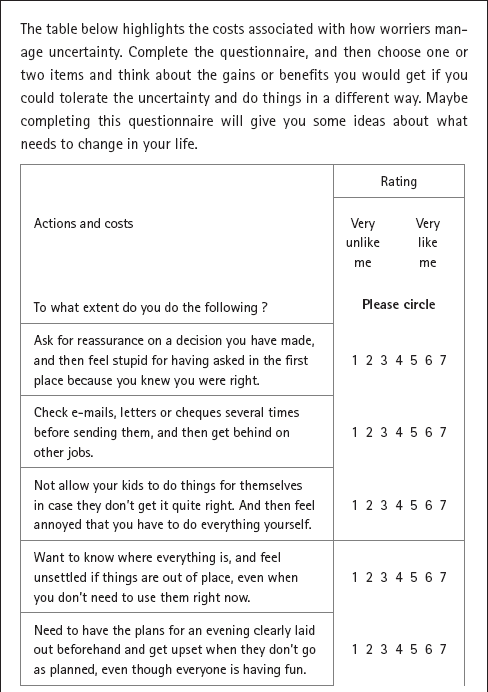
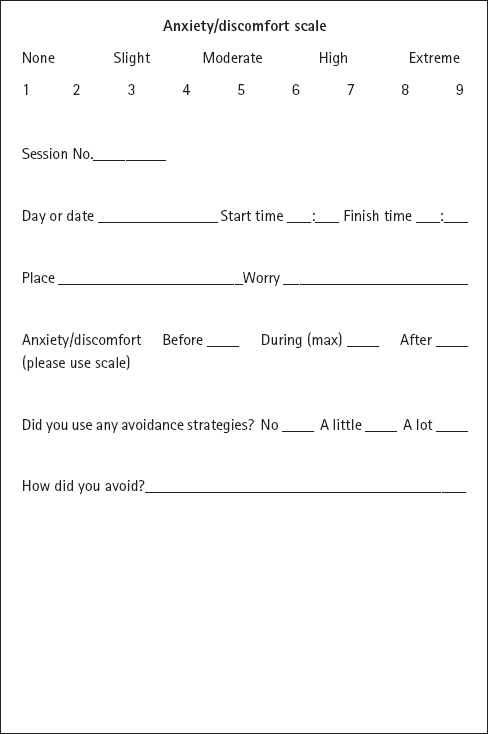
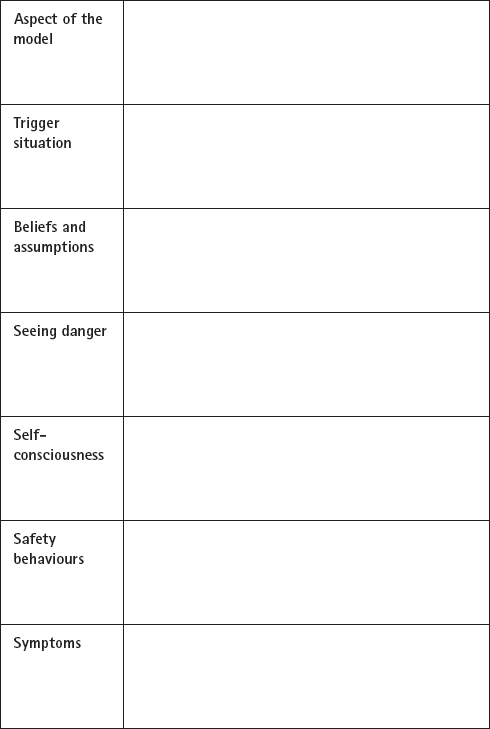
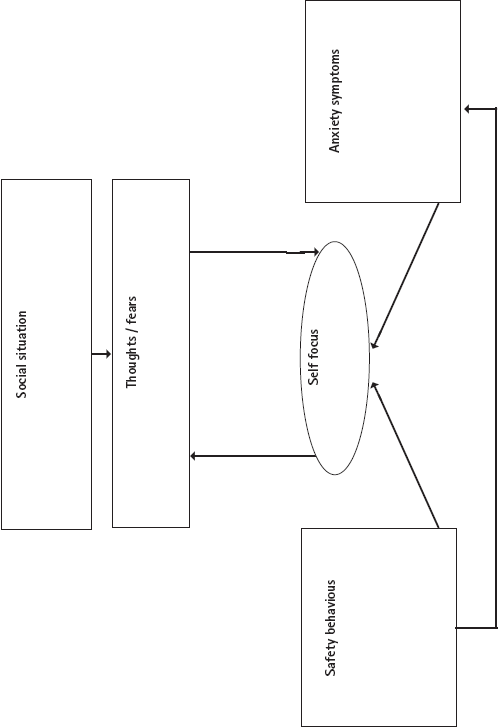
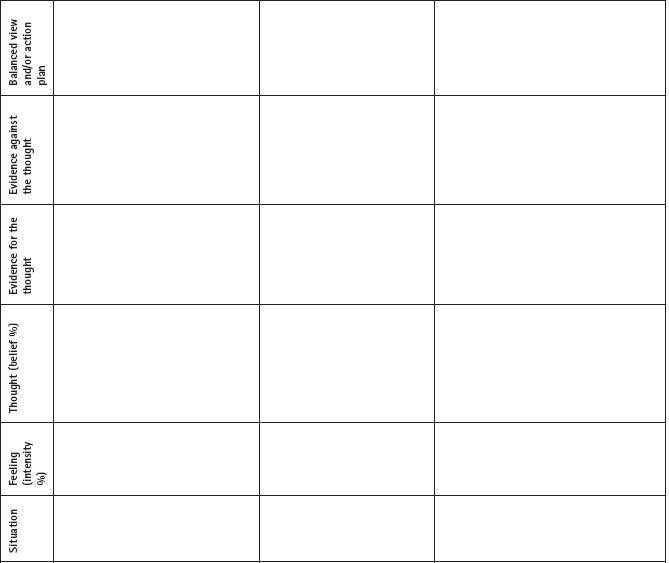
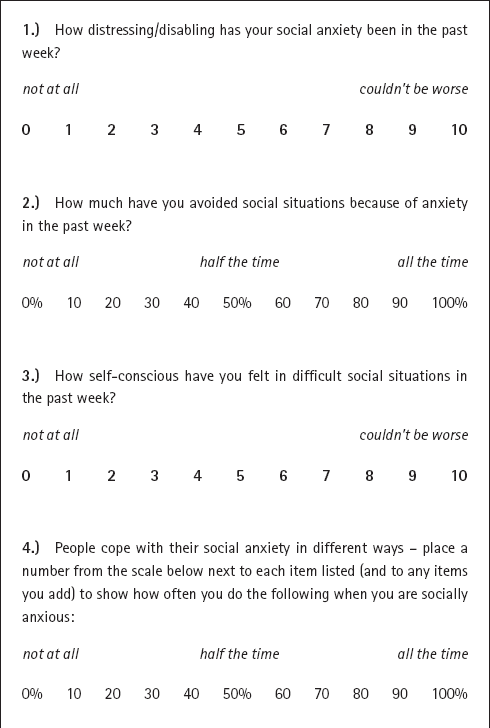
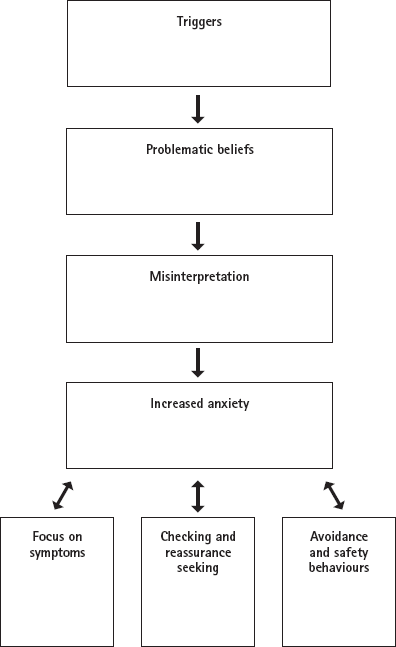
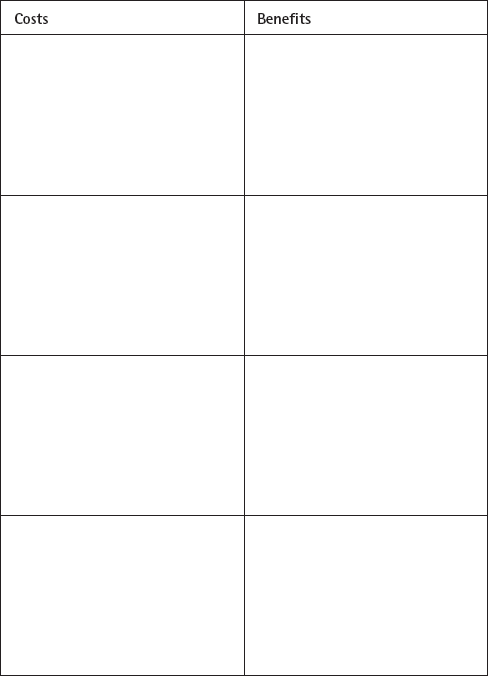
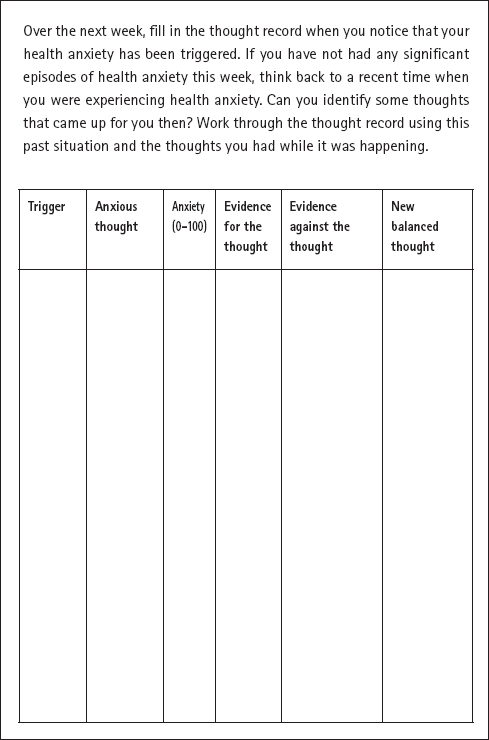
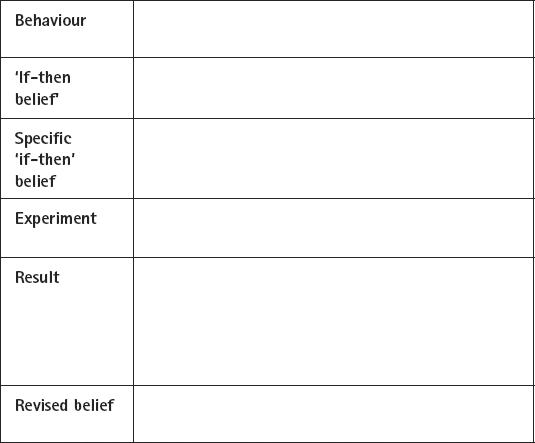
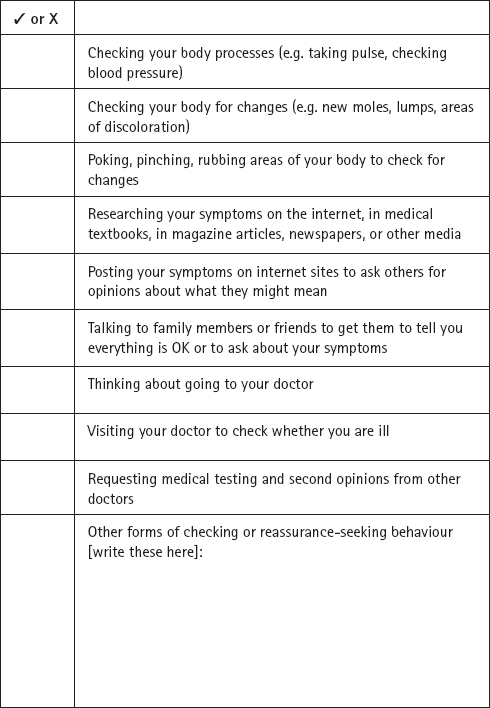
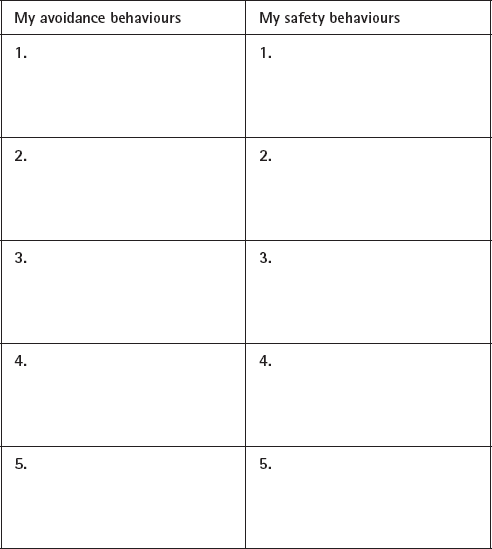
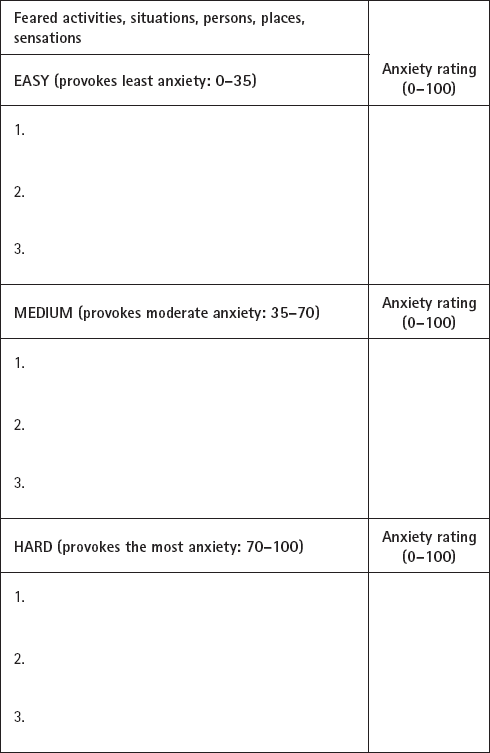
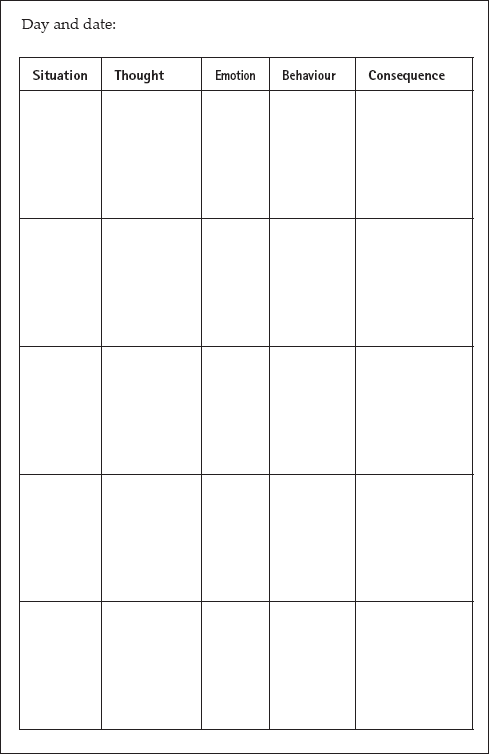
The Obsessive Compulsive Disorder Inventory
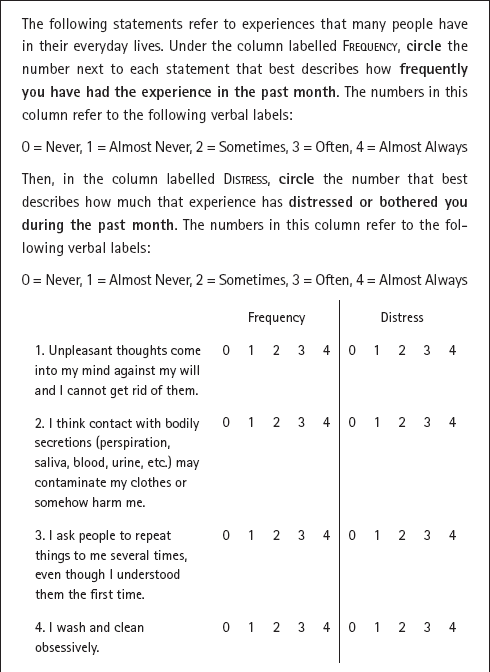
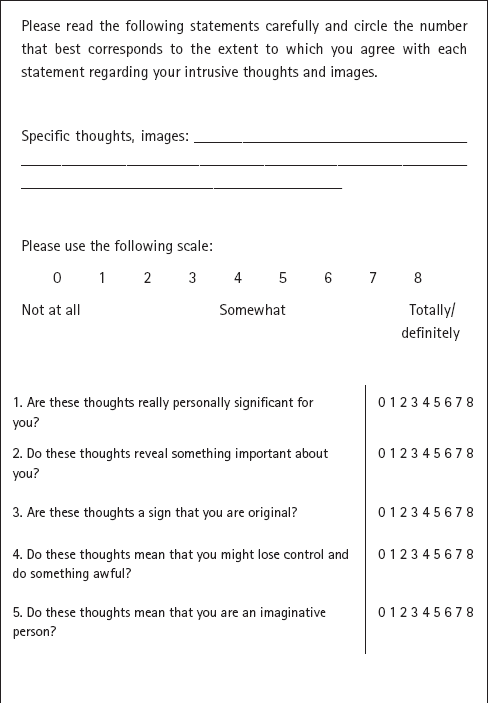
How did my anxiety start?
Why did my anxiety carry on? Clue: refer to the diagram that you drew for the anxiety problem you’ve been experiencing. Think of the meaning you were placing on particular events, and what you were doing to try to improve the situation but which might have backfired e.g. avoidance.
What have I learned in this self-help book that has been useful? Clue: Put as much as you can here.
What situations might lead to a setback for me? Clue: think about some of the triggers that led to the development of the problem in the first place, or other stressors in your life.
What will be the early warning signs of a setback for me? Clue: Think back to a recent episode of anxiety – what signs were there that this episode might be about to happen? Catching your anxiety early is going to be helpful.
What will I do about it? Clue: have a realistic plan for how to tackle setbacks.
How will I distinguish between having a setback and being back at square one? Clue: if you have a difficult period, you don’t want to cata-strophize it and think you have learned nothing from going through this book. Distinguish between a lapse (or slip) and a full relapse.
How do I see myself in:
1 month:
6 months:
1 year:
5 years:
Finally, what is my ‘message in a bottle’? Clue: If you could only remember three things you have learned from this book, what would they be?